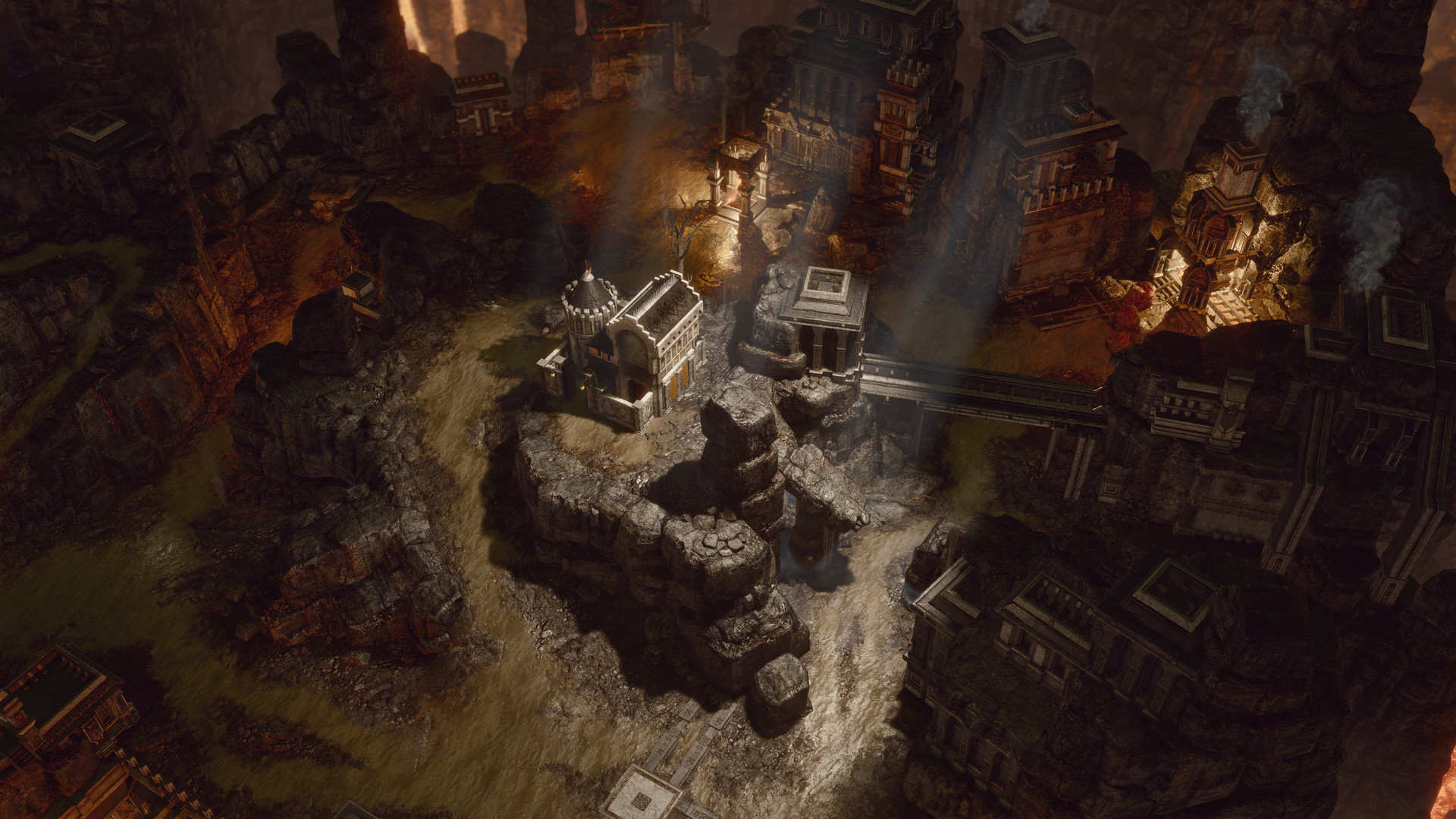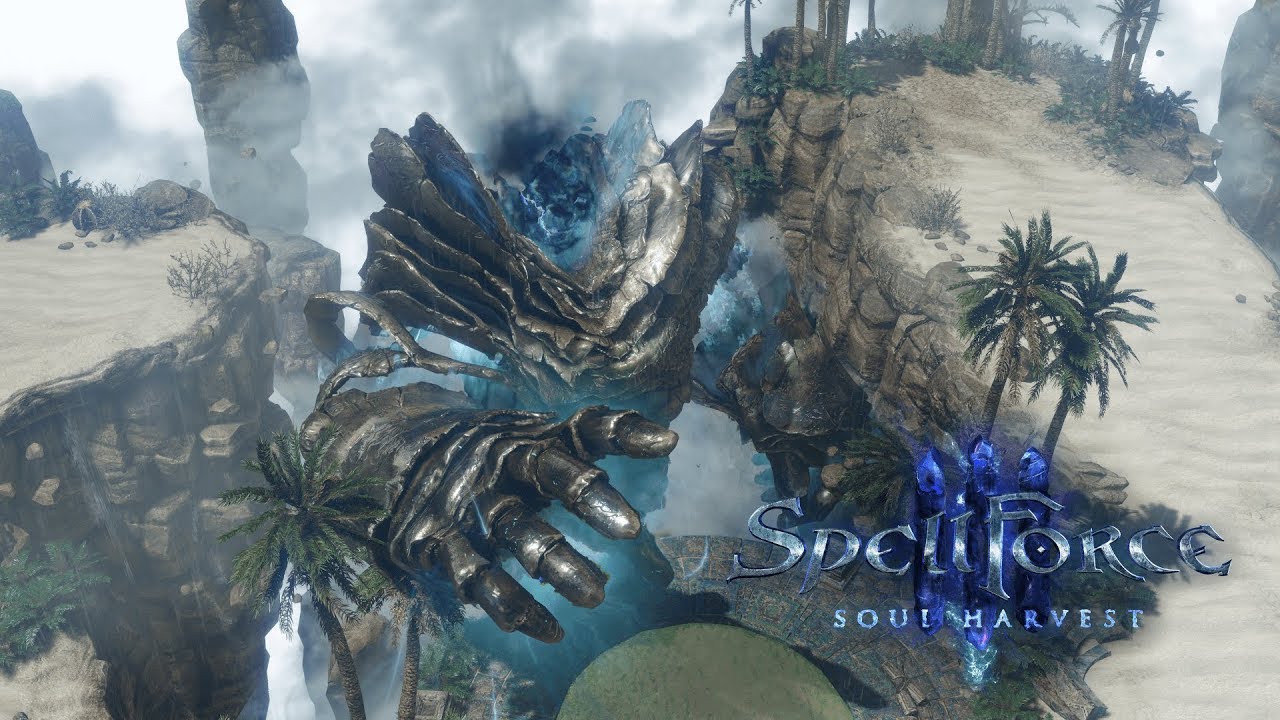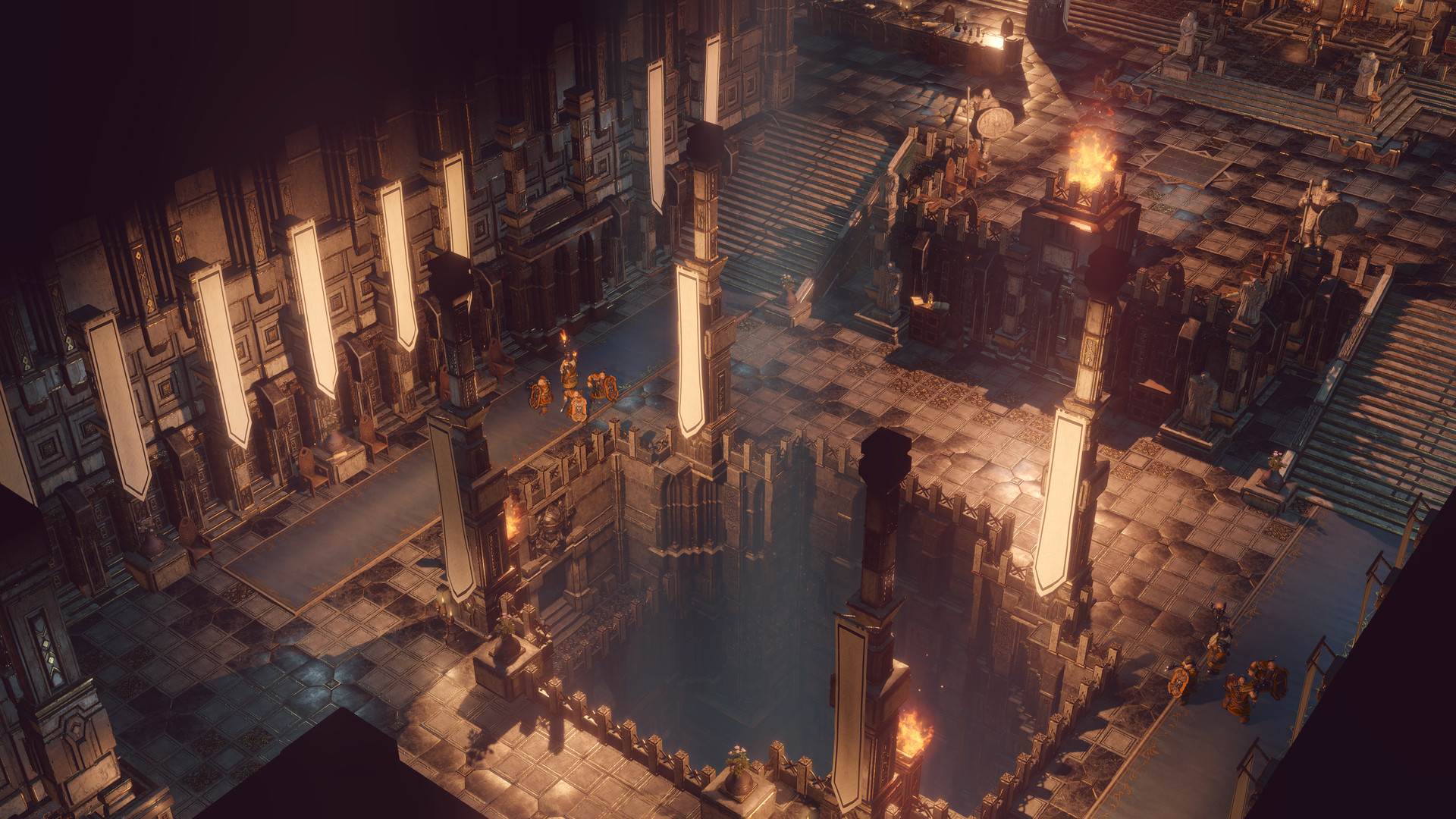SpellForce has always been an incredibly ambitious game franchise. It’s no small task to blend real-time-strategy and hero-based role-playing into one neat, tidy package. However, Grimlore Games has been at it for over 15 years.
Does the stand-alone expansion to the series, SpellForce 3: Soul Harvest, live up to the vaunted promises of its predecessors, or does it fall frustratingly short?
A Cold Open
If you’re not familiar with the SpellForce series, or even SpellForce 3, Soul Harvest does a pretty impressive job of teaching new players the game’s systems. And before you ask why I’ve brought this up, trust that accessibility is key since there really aren’t many other games quite like this one.
In brief, SpellForce 3: Soul Harvest plays like a mash-up between Warcraft, Diablo, Dragon Age, and League of Legends. As the game begins, a lengthy tutorial section will gently guide you through character creation, kindly pointing out each class’ key attributes so that you can concentrate on them.
From there, the game allows you to become familiar with your hero’s equipment, skill tree, spells, abilities, buffs, and debuffs. It all feels at least somewhat familiar to folks who have played top-down or isometric RPGs in the past, which gives new players a nice point of entry.
From there, it teaches you about resource management, town building, army allocation, and the other RTS elements of the game. Again, this will feel familiar to folks who grew up alongside Command & Conquer titles.
It seems like a bit of a slog in the moment, but it’s appreciated when the game starts in earnest. You’re matched with a group of heroes, each with their own equipment, spells, skill trees, and attributes to juggle, all while you’re attempting to raise an army to beat back your opponents while expanding your territory by capturing control points.
A Jam-Packed Expansion
According to the game’s developers, the stand-alone campaign should take about 20 hours to complete, though I’d bet that mileage will vary for most folks. There are so many sidequests and so many secret caves and alcoves to explore in each part of the world map that at the end of the day, folks might spend upwards of 30 hours on the campaign alone. And that doesn’t account for skill level or for the single battle skirmish mode either.
There’s a lot here to dig into.
Of particular note is the way that some quests mess with the game’s formula a bit, or streamline it altogether. One early sidequest has the party traveling through a cave in order to tunnel behind enemy lines. As the party enters, all real-time-strategy gameplay elements fade away, and the game turns into a dungeon crawler for a few minutes as the party smashes skeletons, banishes ghosts, and hunts for loot.
It may seem jarring, confusing, and jilted on paper, but in practice, the gameplay elements really do work very well in concert with one another. More impressively, the campaign really knows when to bring one element out, and have some others take a back seat in order to keep gameplay refreshing.
Nightmare Mode
Here’s where we get into the part of the review that I dread writing, because in order to make this point, I have to get into a little games journalism-ism.
See, there are only so many objective truths out there about games. A game can be good, great even, and certain people will just not enjoy it. Maybe it’s too difficult, maybe there’s something they find off-putting about the art style, or maybe they simply don’t like the genre. There are thousands of reasons why folks can like an otherwise great game, and each of those reasons is just as valid as more objective complaints about the game’s stability or quality.
That brings me to this point: I can say, without a doubt, that the SpellForce series is not for everyone.

And I don’t mean that in some sort of Dark Souls-y way; SpellForce 3: Soul Harvest‘s difficulty levels are well-tuned, and I never found myself overly frustrated. Even if you enjoy role-playing games and real-time strategy games, the core gameplay mechanics in this game can prove to be stressful.
You know that feeling you get at work when it’s lunchtime, but your boss has just handed you three assignments to do by the end of the day? There were shadows of that feeling creeping in during my hours with the game, and for folks prone to stress brought on by multitasking, this might be a sticking point.
Obviously, this comes with the territory in any real-time strategy game. Resource management, technology upgrades, raising an army while building defenses — part of the appeal of these games is juggling all these responsibilities at once.
SpellForce 3: Soul Harvest goes a little bit deeper, though, and in adding Diablo-esque role-playing mechanics, everything becomes much more complicated. You’re not only juggling resources, but you’re also juggling spells, attributes, and equipment for your heroes, too. To exacerbate matters, they are out on a quest across the map while your base is under attack, and you’re out of moonsilver, and you don’t have any earthshapers left to protect your infantry.
Granted, this is more an “issue” with the game series as a whole and not specifically with SpellForce 3: Soul Harvest. And having said all that, the way in which the game’s campaign shifts focus from one gameplay style to another is one of it’s biggest strengths over the base game. If you found vanilla SpellForce 3 a bit intimidating and stressful, you’ll be pleasantly surprised by the expansion.
Pros:
- Masters the combination of RPG and RTS better than the base game
- Bursting at the seams with content
- A bargain at $25 (less if you already own the main game)
Cons:
- It can be stressful to manage everything, even for veterans of the RTS genre
At the end of the day, I’m also assuming that all this difficulty stuff won’t matter to a lot of you, because the game really is great, and worth playing no matter whether you’re a fan of the series, a fan of real-time strategy games, or even a fan of role-playing games.
It’s unique, fun, and challenging in all the right way. And hey, if it stresses you out, you’ll know early enough.
[Note: A copy of Spellforce 3: Soul Harvest was provided by Grimlore Games for the purpose of this review.]








Published: May 30, 2019 06:50 pm